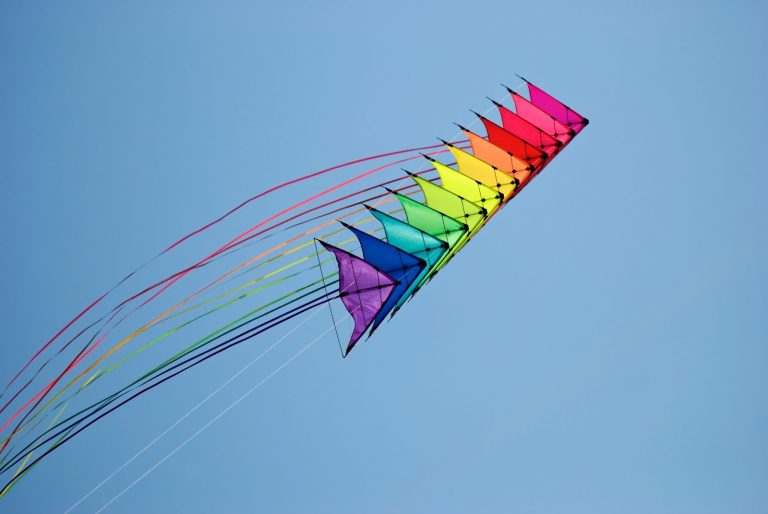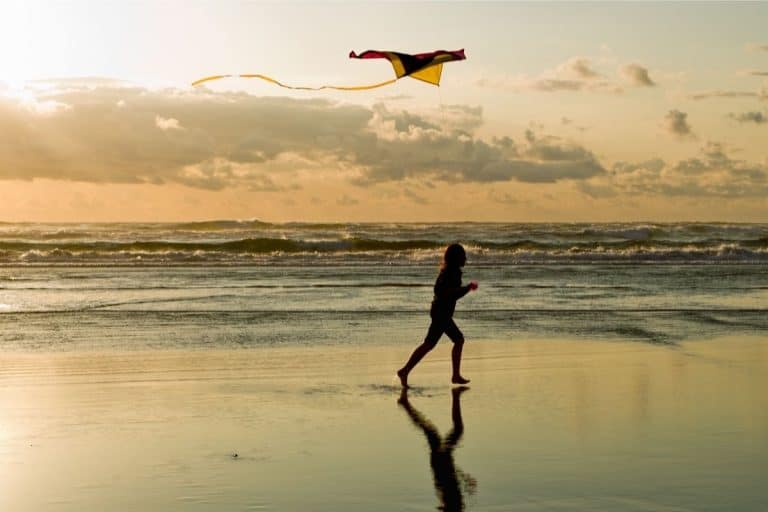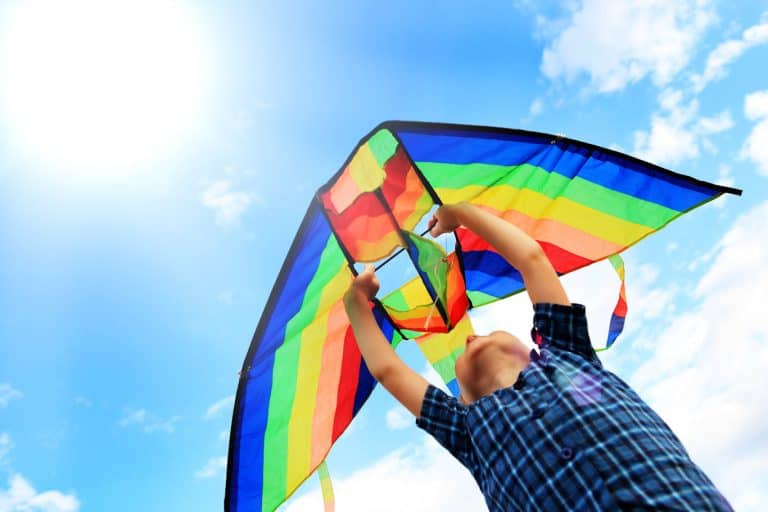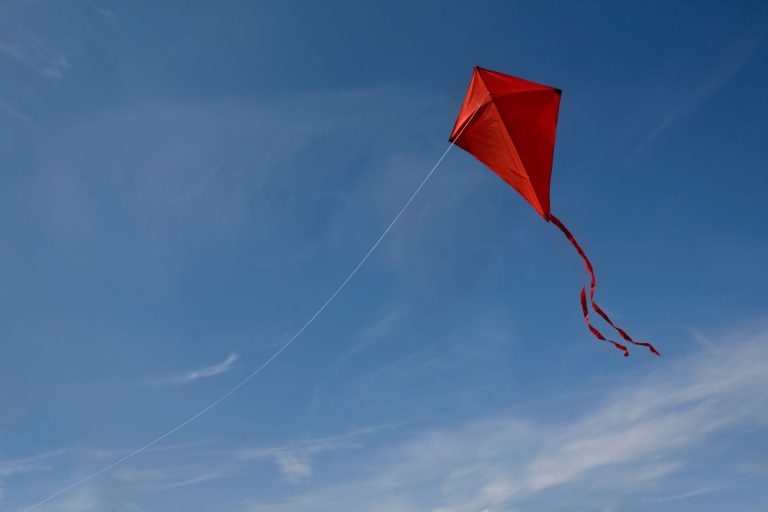Should You Fly A Kite A Night?
Kite flying is an activity designed for everyone. Boys and girls, young and old, can enjoy the action. While flying a kite can quickly be done at any time and place, can you fly your kites at night?
As a general rule, there are no restrictions for flying a kite. As long as there is sufficient wind, a kite can fly at night and in the day. Flying on a kite at night can offer a vastly different experience and can be a memorable experience for many.
When it comes to kites, you certainly have come to the right place! As an expert kite pilot, we’ll take a look at kite flying at night and the optimal times to fly.
Why Should I Fly A Kite At Night? Why Not?
In the day, kite flying can be an exciting activity, and the added visibility allows your kite’s designs and motifs to be exposed thoroughly. However, there is a stark contrast regarding kite flying at night. And while the day is an activity of fun, kite flying at night can be a meditative activity.
Although flying a kite at night is not necessarily better than flying a kite in the day, it has its perks. Below is a list of why you should consider flying your kite at night: (source)
Reasons Why You Should Fly A Kite At Night
- Kite flying at night is meditative
- You can stargaze as well as pilot a kite
- You can utilize night kites and enjoy the view
Before we look at each of these points in more detail, there is one significant drawback to night flying: safety.

Why Exercise Caution Flying A Kite At Night
There are two primary concerns to your safety flying a kite at night. First, you need to ensure there are no powerlines in the area. Powerlines are very difficult to see at night when looking at the sky, so find the power poles and ensure you are extremely clear of any potential entanglements.
The second safety concern with night flying is the trip and fall scenario. It is especially true if flying in a farm field or similar. If the ground is uneven and you are moving around at night looking upward, there is a much greater chance of tripping and falling. So, extra caution is indeed a necessity.
Let’s look at some of those reasons why night flying might be a good idea for you, as long as you’re cautious.
Night Aviation: Meditative Peaceful Enjoyment
On clear, non-cloudy days, one can always enjoy the unique activity of night kite flying. While the wind during the day can be warm and dry, the breeze at night is cool, and the atmosphere is much more private and more freeing.
Night kite flying is a niche activity that not all will enjoy. First of all, if one does not favor quiet environments, kite flying at night can get boring quickly. Moreover, those uncomfortable with the dark can undoubtedly struggle with the activity.
During summer nights, kite flying can help you meditate and de-stress. In addition to that, night kite flying can be a romantic date activity (for adults), or for something more family-friendly, it can be a good family bonding event too.
Kite Flying And Stargazing
While kite flying at night alone may tickle your fancy, there is a bonus about such activity that not many realize. For example, kite flying at night can jive with many activities like camping and stargazing.
Everything is convenient because stargazing is not too different from flying a kite at night since you are looking at the sky anyway. It’s not a question about “if you can fly a kite at night” but more of a question of “will you?”
Night Kites And The Magic Of LED
All the while, we were talking about using regular “day kites” for night kite flying. However, there is a type of kite that is designed specifically for night flying.
Many people are not too keen on the idea of flying a kite at night. There are a few understandable reasons for this, of course. One key factor is that there is insufficient visibility for the whole activity to be enjoyable.
However, in this day and age of cloud computing and fast internet, making a kite visible at night is nothing but a trifle problem to solve. In countries where kite flying is prevalent in their culture, night kites have gained popularity.
For example, India and their famous “Gurajat day” (a celebration involving kite flying) employ many kite enthusiasts to conduct a night kite flying activity involving kites that have designs that revolve around the implementation of LED lights. (source)
Twinkle, Twinkle, Little Kite
There is something spectacular about fireworks. However, when it all ends, one cannot help but wish for it to be longer instead. Well, night kites are precisely that.
Unlike most kites flown during the day, night kites have designs with LED light engravings. In this way, not only do the kites stay visible at night, but they also make the night sky more colorful and aesthetically pleasing.
The resulting product is a kite that illuminates the sky with a burst of various colors of animals, shapes, and designs.
While it is true that these kites are only really used during important festivals, you can use them anytime you want as long as you use them responsibly. Buying them is not too hard either, as some customized versions are already available for purchase online.
The Best Conditions To Fly A Kite
Although we have repeatedly said that one could fly kites anytime and anywhere, some days are better for flying than others. This process can get critical, especially when it comes to night flying. While day flying may be a better or worse experience, night flying is almost always a more challenging task to execute in comparison.
The Night Breeze Ain’t It
One of the primary reasons you will undoubtedly need to research before going out for a night flight session is the lessened prevalence of wind during the night. Compared to the day, where it is relatively windy and the breeze is active, nights may be a bit more mellow, and there is a scientific reason for that.
Air circulation is pretty much the primary reason why weather and climate exist. As a general rule, cool air sinks (due to density), and warm air rises. And at night, there are not a lot of agents that make the air warmer, unlike in the day where the sun would always create a temperature disparity.
Because of the temperature during the day, the wind circulates through the atmosphere faster. However, the wind is a lot more stagnant during the night since there is no significant difference in temperature. (source)
Even though this is the case, we can still fly a kite at night. However, one must prepare and research before executing the activity.
The Best Month To Fly A Kite At Night
There is no “perfect month” to fly a kite. For instance, December might be a winter wonderland for many (like the United States and Canada, generally those in the northern hemisphere), while being a perfect schedule for a beach vacation for some (those in the southern hemisphere). As such, we need to talk about it in terms of seasons.
For many, the winter is an unbearable season to fly a kite at night. Not only is it too cold, but it might be dangerous as well. Moreover, the winds are not active enough in the winter.
In contrast, the summer is an excellent time to fly a kite. Not only can the weather be very cool yet mild at night, but the soil is also warm, making wind circulation more active since they serve as another medium for dispersing heat.
Autumn and spring can be excellent candidates as well. However, they might not be as desirable as summer, so keep that in mind.
A Quick Summary
Kite flying at night might be a novel idea, but one can certainly fly a kite at night! There are many benefits to this, as generally, you can stargaze, meditate, and even enjoy a particular type of kite: a night kite.
A night kite is a kite that has LEDs equipped. When flown, they light up the night sky and form different shapes and animals.
However, finding the perfect day to fly a kite at night is very challenging. However, night kite flying in the summer is more favorable than winter, spring, or autumn.
Frequently Asked Questions
- When Should I Fly A Kite In The Day?
Unlike the night, days are generally much windier, so the range of viable dates is numerous in comparison. In the United States and most areas in the northern hemisphere, the most appropriate time to fly a kite falls in autumn (fall). It is because autumn has favorable temperatures and has a stabler wind breeze.
- Where Should I Fly A Kite?
It is crucial to take note of your location when flying a kite, especially at night where visibility is not within your favor. Most preferably, it would be best if you flew kites in open areas. Moreover, any rooms with any visible power lines, or any hanging lines for that matter, should be avoided.
- Can You Use Glowsticks For Night Kites?
Although it can get pretty clunky, you can use glowsticks for night kites with the proper balance. Glowsticks can add a little something special to your kite while flying it at night. Glowsticks come in many colors and shapes and are used by many for kite flying at night.
Sources
- Shah, N., “Can You Fly A Kite Night?”, Fly360, October 2, 2020. https://fly360.co.in/faq-items/can-you-fly-a-kite-at-night/
- “Night Kite Flying – Gujarat Day Celebrations,” My Best Kite, Last Accessed November 30, 2021. https://www.my-best-kite.com/night-kite-flying.html
- Skilling, T., “Why does it always seem to be windier during the day than at night?”, WGN9, last accessed November 30, 2021. https://wgntv.com/weather/why-does-it-always-seem-to-be-windier-during-the-day-than-at-night/
- “Kite Flying Tips,” Kitty Hawkites, last accessed December 1, 2021. https://store.kittyhawk.com/pages/kite-flying-tips







